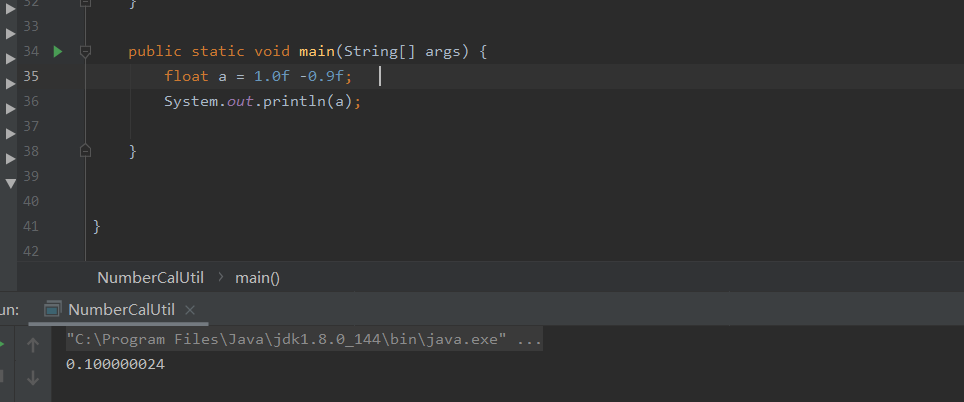MapReduce Shuffle源码解读
相信很多小伙伴都背过shuffle的八股文,但一直不是很理解shuffle的过程,这次我通过源码来解读下shuffle过程,加深对shuffle的理解,但是我自己还是个菜鸟,这篇博客也是参考了很多资料,如果有不对的地方,请指正。
shuffle是Map Task和 Reduce Task之间的一个阶段,本质上是一个
跨节点跨进程间的数据传输
,网上的资料也把MapReduce的过程细分为六个阶段:
- Collect 2. Spill 3.Merge 4.Copy 5.Merge 6. Sort
看过源码之后,这几个阶段划分的还是很有道理的,首先看看官网上对shuffle的描述图,有个印象

Map
首先,我们先来看看Map阶段的代码,先找到Map Task的入口(org/apache/hadoop/mapred/MapTask.java)的run方法,当map task启动时都会执行这个方法。
@Override
public void run(final JobConf job, final TaskUmbilicalProtocol umbilical)
throws IOException, ClassNotFoundException, InterruptedException {
this.umbilical = umbilical; // 一个taskAttempt的代理,后面比较多的地方使用
if (isMapTask()) {
// If there are no reducers then there won't be any sort. Hence the map
// phase will govern the entire attempt's progress.
if (conf.getNumReduceTasks() == 0) {
mapPhase = getProgress().addPhase("map", 1.0f);
} else {
// If there are reducers then the entire attempt's progress will be
// split between the map phase (67%) and the sort phase (33%).
mapPhase = getProgress().addPhase("map", 0.667f);
sortPhase = getProgress().addPhase("sort", 0.333f);
}
}
// 启动任务状态汇报器,其内部有周期性的汇报线程(状态汇报和心跳)
TaskReporter reporter = startReporter(umbilical);
boolean useNewApi = job.getUseNewMapper();
initialize(job, getJobID(), reporter, useNewApi); // 重要方法,可以认为初始化task启动的一切资源了
// check if it is a cleanupJobTask
if (jobCleanup) {
runJobCleanupTask(umbilical, reporter);
return;
}
if (jobSetup) {
runJobSetupTask(umbilical, reporter);
return;
}
if (taskCleanup) {
runTaskCleanupTask(umbilical, reporter);
return;
}
if (useNewApi) {
runNewMapper(job, splitMetaInfo, umbilical, reporter); // 核心代码,点进去
} else {
runOldMapper(job, splitMetaInfo, umbilical, reporter);
}
done(umbilical, reporter);
}
这里umbilical比较难理解,我其实也没怎么搞懂,看名字是个协议,这里贴出它的注释
任务子进程用于联系其父进程的协议。父进程是一个守护进程,它轮询中央主进程以获取新的map或reduce Task,并将其作为子进程(Child)运行。孩子和父母之间的所有通信都是通过此协议进行的
看起来是个RPC,这个父进程我不是很清楚,我理解是在v1版本的话,这个可能是taskTracker,如果在v2版本(yarn)可能是ApplicationMaster,如果不对,请大神解答我的疑问。
进入runNewMapper方法
@SuppressWarnings("unchecked")
private <INKEY,INVALUE,OUTKEY,OUTVALUE>
void runNewMapper(final JobConf job,
final TaskSplitIndex splitIndex,
final TaskUmbilicalProtocol umbilical,
TaskReporter reporter
) throws IOException, ClassNotFoundException,
InterruptedException {
// make a task context so we can get the classes 创建Task的上下文环境
org.apache.hadoop.mapreduce.TaskAttemptContext taskContext =
new org.apache.hadoop.mapreduce.task.TaskAttemptContextImpl(job,
getTaskID(),
reporter);
// make a mapper 通过反射创建mapper
org.apache.hadoop.mapreduce.Mapper<INKEY,INVALUE,OUTKEY,OUTVALUE> mapper =
(org.apache.hadoop.mapreduce.Mapper<INKEY,INVALUE,OUTKEY,OUTVALUE>)
ReflectionUtils.newInstance(taskContext.getMapperClass(), job);
// make the input format 通过反射创建inputFormat,来读取数据
org.apache.hadoop.mapreduce.InputFormat<INKEY,INVALUE> inputFormat =
(org.apache.hadoop.mapreduce.InputFormat<INKEY,INVALUE>)
ReflectionUtils.newInstance(taskContext.getInputFormatClass(), job);
// rebuild the input split // 获取切片信息
org.apache.hadoop.mapreduce.InputSplit split = null;
split = getSplitDetails(new Path(splitIndex.getSplitLocation()),
splitIndex.getStartOffset());
LOG.info("Processing split: " + split);
org.apache.hadoop.mapreduce.RecordReader<INKEY,INVALUE> input =
new NewTrackingRecordReader<INKEY,INVALUE> //通过反射创建RecordReader。InputFormat是通过RecordReader来读取数据,这个也是大学问,在job submit时很关键
(split, inputFormat, reporter, taskContext);
job.setBoolean(JobContext.SKIP_RECORDS, isSkipping());
org.apache.hadoop.mapreduce.RecordWriter output = null;
// get an output object
if (job.getNumReduceTasks() == 0) { // 如果没有reduce任务,则直接写入磁盘
output =
new NewDirectOutputCollector(taskContext, job, umbilical, reporter);
} else { // 核心代码,创建collector收集器 ,点进去
output = new NewOutputCollector(taskContext, job, umbilical, reporter);
}
org.apache.hadoop.mapreduce.MapContext<INKEY, INVALUE, OUTKEY, OUTVALUE>
mapContext =
new MapContextImpl<INKEY, INVALUE, OUTKEY, OUTVALUE>(job, getTaskID(),
input, output,
committer,
reporter, split);
org.apache.hadoop.mapreduce.Mapper<INKEY,INVALUE,OUTKEY,OUTVALUE>.Context
mapperContext =
new WrappedMapper<INKEY, INVALUE, OUTKEY, OUTVALUE>().getMapContext(
mapContext);
try {
input.initialize(split, mapperContext);
mapper.run(mapperContext); // 调用我们自己实现的mapper类
mapPhase.complete();
setPhase(TaskStatus.Phase.SORT);
statusUpdate(umbilical);
input.close();
input = null;
output.close(mapperContext);
output = null;
} finally {
closeQuietly(input);
closeQuietly(output, mapperContext);
}
}
马上进入
collect
阶段了,点进 NewOutputCollector,看看如何创建Collector
private class NewOutputCollector<K,V>
extends org.apache.hadoop.mapreduce.RecordWriter<K,V> {
private final MapOutputCollector<K,V> collector;
private final org.apache.hadoop.mapreduce.Partitioner<K,V> partitioner;
private final int partitions;
@SuppressWarnings("unchecked")
NewOutputCollector(org.apache.hadoop.mapreduce.JobContext jobContext,
JobConf job,
TaskUmbilicalProtocol umbilical,
TaskReporter reporter
) throws IOException, ClassNotFoundException {
collector = createSortingCollector(job, reporter);
partitions = jobContext.getNumReduceTasks(); // partitions数等于reduce任务数
if (partitions > 1) {
partitioner = (org.apache.hadoop.mapreduce.Partitioner<K,V>)
ReflectionUtils.newInstance(jobContext.getPartitionerClass(), job);
} else {
partitioner = new org.apache.hadoop.mapreduce.Partitioner<K,V>() {
@Override
public int getPartition(K key, V value, int numPartitions) {
return partitions - 1;
}
};
}
}
@Override
public void write(K key, V value) throws IOException, InterruptedException {
collector.collect(key, value, // 向对应分区的环形缓冲区写入(k,v)
partitioner.getPartition(key, value, partitions));
}
@Override
public void close(TaskAttemptContext context
) throws IOException,InterruptedException {
try {
collector.flush();//核心方法,将数据刷出去。
} catch (ClassNotFoundException cnf) {
throw new IOException("can't find class ", cnf);
}
collector.close();
}
}
点进 creareSortingCollector
@SuppressWarnings("unchecked")
private <KEY, VALUE> MapOutputCollector<KEY, VALUE> // collector是map 类型
createSortingCollector(JobConf job, TaskReporter reporter)
throws IOException, ClassNotFoundException {
MapOutputCollector.Context context =
new MapOutputCollector.Context(this, job, reporter);
Class<?>[] collectorClasses = job.getClasses( // 获取Map Collector的类型
JobContext.MAP_OUTPUT_COLLECTOR_CLASS_ATTR, MapOutputBuffer.class); // 说到底还是MapOutputBuffer类型
int remainingCollectors = collectorClasses.length;
Exception lastException = null;
for (Class clazz : collectorClasses) {
try {
if (!MapOutputCollector.class.isAssignableFrom(clazz)) { // MapOutputCollector是不是clazz或者其父类
throw new IOException("Invalid output collector class: " + clazz.getName() +
" (does not implement MapOutputCollector)");
}
Class<? extends MapOutputCollector> subclazz =
clazz.asSubclass(MapOutputCollector.class);
LOG.debug("Trying map output collector class: " + subclazz.getName());
MapOutputCollector<KEY, VALUE> collector =
ReflectionUtils.newInstance(subclazz, job); // 创建collector
collector.init(context); // 初始化 点进去
LOG.info("Map output collector class = " + collector.getClass().getName());
return collector;
} catch (Exception e) {
String msg = "Unable to initialize MapOutputCollector " + clazz.getName();
if (--remainingCollectors > 0) {
msg += " (" + remainingCollectors + " more collector(s) to try)";
}
lastException = e;
LOG.warn(msg, e);
}
}
}
这个
init
方法十分的关键,不仅涉及了
环形缓冲区
,还涉及了
Spill
public void init(MapOutputCollector.Context context
// 这个方法中,主要就是对收集器对象进行一些初始化
) throws IOException, ClassNotFoundException {
job = context.getJobConf();
reporter = context.getReporter();
mapTask = context.getMapTask();
mapOutputFile = mapTask.getMapOutputFile();
sortPhase = mapTask.getSortPhase();
spilledRecordsCounter = reporter.getCounter(TaskCounter.SPILLED_RECORDS);
partitions = job.getNumReduceTasks();
rfs = ((LocalFileSystem)FileSystem.getLocal(job)).getRaw();
//sanity checks
final float spillper =
job.getFloat(JobContext.MAP_SORT_SPILL_PERCENT, (float)0.8); // 设置环形缓冲区溢写比例为0.8
final int sortmb = job.getInt(MRJobConfig.IO_SORT_MB,
MRJobConfig.DEFAULT_IO_SORT_MB); // 默认环形缓冲区大小为100M
indexCacheMemoryLimit = job.getInt(JobContext.INDEX_CACHE_MEMORY_LIMIT,
INDEX_CACHE_MEMORY_LIMIT_DEFAULT);
if (spillper > (float)1.0 || spillper <= (float)0.0) {
throw new IOException("Invalid \"" + JobContext.MAP_SORT_SPILL_PERCENT +
"\": " + spillper);
}
if ((sortmb & 0x7FF) != sortmb) {
throw new IOException(
"Invalid \"" + JobContext.IO_SORT_MB + "\": " + sortmb);
}
// 排序,默认使用的快排
// 获取到排序对象,在数据由环形缓冲区溢写到磁盘中前
// 并且排序是针对索引的,并非对数据进行排序。
sorter = ReflectionUtils.newInstance(job.getClass(
MRJobConfig.MAP_SORT_CLASS, QuickSort.class,
IndexedSorter.class), job);
// buffers and accounting
// 对环形缓冲区初始化,大名鼎鼎的环形缓冲区本质上是个byte数组
int maxMemUsage = sortmb << 20; // 将MB转换为Bytes
// 一对kv数据有四个元数据MATE,分别是valstart,keystart,partitions,vallen,都是int类型
// METASIZE 就是4个int转换成byte就是4*4
maxMemUsage -= maxMemUsage % METASIZE; // 计算METE数据存储的大小
kvbuffer = new byte[maxMemUsage]; // 元数据数组 以byte为单位
bufvoid = kvbuffer.length;
kvmeta = ByteBuffer.wrap(kvbuffer)
.order(ByteOrder.nativeOrder())
.asIntBuffer(); // 将byte单位的kvbuffer转换成int单位的kvmeta
setEquator(0);
bufstart = bufend = bufindex = equator;
kvstart = kvend = kvindex;
// kvmeta中存放元数据实体的最大个数
maxRec = kvmeta.capacity() / NMETA;
softLimit = (int)(kvbuffer.length * spillper); // buffer 溢写的阈值
bufferRemaining = softLimit;
LOG.info(JobContext.IO_SORT_MB + ": " + sortmb);
LOG.info("soft limit at " + softLimit);
LOG.info("bufstart = " + bufstart + "; bufvoid = " + bufvoid);
LOG.info("kvstart = " + kvstart + "; length = " + maxRec);
// k/v serialization
comparator = job.getOutputKeyComparator();
keyClass = (Class<K>)job.getMapOutputKeyClass();
valClass = (Class<V>)job.getMapOutputValueClass();
serializationFactory = new SerializationFactory(job);
keySerializer = serializationFactory.getSerializer(keyClass);
keySerializer.open(bb); // 将key写入bb中 blockingbuffer
valSerializer = serializationFactory.getSerializer(valClass);
valSerializer.open(bb); // 将value写入bb中
// output counters
mapOutputByteCounter = reporter.getCounter(TaskCounter.MAP_OUTPUT_BYTES);
mapOutputRecordCounter =
reporter.getCounter(TaskCounter.MAP_OUTPUT_RECORDS);
fileOutputByteCounter = reporter
.getCounter(TaskCounter.MAP_OUTPUT_MATERIALIZED_BYTES);
// compression 压缩器,减少shuffle数据量
if (job.getCompressMapOutput()) {
Class<? extends CompressionCodec> codecClass =
job.getMapOutputCompressorClass(DefaultCodec.class);
codec = ReflectionUtils.newInstance(codecClass, job);
} else {
codec = null;
}
// combiner
// combiner map端的reduce
final Counters.Counter combineInputCounter =
reporter.getCounter(TaskCounter.COMBINE_INPUT_RECORDS);
combinerRunner = CombinerRunner.create(job, getTaskID(),
combineInputCounter,
reporter, null);
if (combinerRunner != null) {
final Counters.Counter combineOutputCounter =
reporter.getCounter(TaskCounter.COMBINE_OUTPUT_RECORDS);
combineCollector= new CombineOutputCollector<K,V>(combineOutputCounter, reporter, job);
} else {
combineCollector = null;
}
// 溢写线程
spillInProgress = false;
minSpillsForCombine = job.getInt(JobContext.MAP_COMBINE_MIN_SPILLS, 3);
spillThread.setDaemon(true); // 是个守护线程
spillThread.setName("SpillThread"); //
spillLock.lock();
try {
spillThread.start(); // 启动一个spill线程
while (!spillThreadRunning) {
spillDone.await();
}
} catch (InterruptedException e) {
throw new IOException("Spill thread failed to initialize", e);
} finally {
spillLock.unlock();
}
if (sortSpillException != null) {
throw new IOException("Spill thread failed to initialize",
sortSpillException);
}
}
从这个类,我们可以看到
环形缓冲区
的一些初始化过程,如大小为100M,开始溢写的比例是0.8,实际上,Collector是一个宏观的概念,本质上就是一个MapOutputBuffer对象。
后面还启动了
Spill
线程,不过如果是第一次进去会被阻塞这里我们先按下不表。
至此,一些map开始之前的工作已经准备好了,至于它是怎么工作的我们可以从我们写的mapper中write方法debug进去,发现其实还是
NewOutputCollector
中定义的write方法,点进去是
MapOutputBuffer
的collect方法
public synchronized void collect(K key, V value, final int partition
) throws IOException {
reporter.progress();
if (key.getClass() != keyClass) {
throw new IOException("Type mismatch in key from map: expected "
+ keyClass.getName() + ", received "
+ key.getClass().getName());
}
if (value.getClass() != valClass) {
throw new IOException("Type mismatch in value from map: expected "
+ valClass.getName() + ", received "
+ value.getClass().getName());
}
if (partition < 0 || partition >= partitions) {
throw new IOException("Illegal partition for " + key + " (" +
partition + ")");
}
checkSpillException();
bufferRemaining -= METASIZE; // 新数据collect时,先将元数据长度前去,之后判断
if (bufferRemaining <= 0) { // 说明已经超过阈值了
// start spill if the thread is not running and the soft limit has been
// reached
spillLock.lock();
try {
do {
// 首次spill时,spillInProgress是false
if (!spillInProgress) {
final int kvbidx = 4 * kvindex; // 单位是byte
final int kvbend = 4 * kvend; // 单位是byte
// serialized, unspilled bytes always lie between kvindex and
// bufindex, crossing the equator. Note that any void space
// created by a reset must be included in "used" bytes
final int bUsed = distanceTo(kvbidx, bufindex); // 剩下可以写入的空间大小
final boolean bufsoftlimit = bUsed >= softLimit; // true说明已经超过softLimit了
if ((kvbend + METASIZE) % kvbuffer.length !=
equator - (equator % METASIZE)) {
// spill finished, reclaim space
resetSpill();
bufferRemaining = Math.min(
distanceTo(bufindex, kvbidx) - 2 * METASIZE,
softLimit - bUsed) - METASIZE; // 这里是重新选择equator吧,但是计算方式不了解
continue;
} else if (bufsoftlimit && kvindex != kvend) {
// spill records, if any collected; check latter, as it may
// be possible for metadata alignment to hit spill pcnt
startSpill(); //开始溢写,里面唤醒spill线程
final int avgRec = (int)
(mapOutputByteCounter.getCounter() /
mapOutputRecordCounter.getCounter());
// leave at least half the split buffer for serialization data
// ensure that kvindex >= bufindex
final int distkvi = distanceTo(bufindex, kvbidx);
final int newPos = (bufindex +
Math.max(2 * METASIZE - 1,
Math.min(distkvi / 2,
distkvi / (METASIZE + avgRec) * METASIZE)))
% kvbuffer.length;
setEquator(newPos);
bufmark = bufindex = newPos;
final int serBound = 4 * kvend;
// bytes remaining before the lock must be held and limits
// checked is the minimum of three arcs: the metadata space, the
// serialization space, and the soft limit
bufferRemaining = Math.min(
// metadata max
distanceTo(bufend, newPos),
Math.min(
// serialization max
distanceTo(newPos, serBound),
// soft limit
softLimit)) - 2 * METASIZE;
}
}
} while (false); // 这是什么写法?????
} finally {
spillLock.unlock();
}
}
// 直接写入buffer,不涉及spill
try {
// serialize key bytes into buffer
int keystart = bufindex;
keySerializer.serialize(key);
// key所占空间被bufvoid分隔,则移动key,
// 将其值放在连续的空间中便于sort时key的对比
if (bufindex < keystart) {
// wrapped the key; must make contiguous
bb.shiftBufferedKey();
keystart = 0;
}
// serialize value bytes into buffer
final int valstart = bufindex;
valSerializer.serialize(value);
// It's possible for records to have zero length, i.e. the serializer
// will perform no writes. To ensure that the boundary conditions are
// checked and that the kvindex invariant is maintained, perform a
// zero-length write into the buffer. The logic monitoring this could be
// moved into collect, but this is cleaner and inexpensive. For now, it
// is acceptable.
bb.write(b0, 0, 0);
// the record must be marked after the preceding write, as the metadata
// for this record are not yet written
int valend = bb.markRecord();
mapOutputRecordCounter.increment(1);
mapOutputByteCounter.increment(
distanceTo(keystart, valend, bufvoid)); //计数器+1
// write accounting info
kvmeta.put(kvindex + PARTITION,
);
kvmeta.put(kvindex + KEYSTART, keystart);
kvmeta.put(kvindex + VALSTART, valstart);
kvmeta.put(kvindex + VALLEN, distanceTo(valstart, valend));
// advance kvindex
kvindex = (kvindex - NMETA + kvmeta.capacity()) % kvmeta.capacity();
} catch (MapBufferTooSmallException e) {
LOG.info("Record too large for in-memory buffer: " + e.getMessage());
spillSingleRecord(key, value, partition); // 长record就直接写入磁盘
mapOutputRecordCounter.increment(1);
return;
}
}
这里首先最重要的方法就是第46行的startSpill()方法,这里点进去会发现一个spillReady.signal(),这就是唤醒之前因spillReady.await()方法阻塞的spill线程,这里的spillReady就是可重入锁,这里spill开始正式工作,这里涉及了环形缓冲区如何写和如何读,会比较抽象,我之后再写一篇关于环形缓冲区的文章。
这里代码就是
Collect
,本质上就是map端将输出的(k,v)数据和它的元数据写入MapOutputBuffer中。
此外,这个代码里也有唤醒spill线程的代码,找到SpillThread的run方法,很明显里面有个很重要的方法
sortAndSpill
private void sortAndSpill() throws IOException, ClassNotFoundException,
InterruptedException {
//approximate the length of the output file to be the length of the
//buffer + header lengths for the partitions
final long size = distanceTo(bufstart, bufend, bufvoid) +
partitions * APPROX_HEADER_LENGTH; // 写出长度
FSDataOutputStream out = null;
FSDataOutputStream partitionOut = null;
try {
// create spill file
final SpillRecord spillRec = new SpillRecord(partitions);
final Path filename =
mapOutputFile.getSpillFileForWrite(numSpills, size);// 默认是output/spillx.out
out = rfs.create(filename);// 创建分区文件
final int mstart = kvend / NMETA;
final int mend = 1 + // kvend is a valid record
(kvstart >= kvend
? kvstart
: kvmeta.capacity() + kvstart) / NMETA;
// 对元数据进行排序,先按照partition进行排序,再按照key值进行排序
// 二次排序,排的是元数据部分
sorter.sort(MapOutputBuffer.this, mstart, mend, reporter);
int spindex = mstart;
final IndexRecord rec = new IndexRecord();
final InMemValBytes value = new InMemValBytes();
for (int i = 0; i < partitions; ++i) {//循环分区
// 溢写时的临时文件 类型是IFile
IFile.Writer<K, V> writer = null;
try {
long segmentStart = out.getPos();
partitionOut = CryptoUtils.wrapIfNecessary(job, out, false);
writer = new Writer<K, V>(job, partitionOut, keyClass, valClass, codec,
spilledRecordsCounter);
if (combinerRunner == null) {
// spill directly
DataInputBuffer key = new DataInputBuffer();
// 写入相同的partition数据
while (spindex < mend &&
kvmeta.get(offsetFor(spindex % maxRec) + PARTITION) == i) {
final int kvoff = offsetFor(spindex % maxRec);
int keystart = kvmeta.get(kvoff + KEYSTART);
int valstart = kvmeta.get(kvoff + VALSTART);
key.reset(kvbuffer, keystart, valstart - keystart);
getVBytesForOffset(kvoff, value);
writer.append(key, value);
++spindex;
}
} else { // 进行combiner,避免小文件问题
int spstart = spindex;
while (spindex < mend &&
kvmeta.get(offsetFor(spindex % maxRec)
+ PARTITION) == i) {
++spindex;
}
// Note: we would like to avoid the combiner if we've fewer
// than some threshold of records for a partition
if (spstart != spindex) {
combineCollector.setWriter(writer);
RawKeyValueIterator kvIter =
new MRResultIterator(spstart, spindex);
combinerRunner.combine(kvIter, combineCollector);
}
}
// close the writer
writer.close(); /// 将文件写入本地磁盘中,不是HDFS上
if (partitionOut != out) {
partitionOut.close();
partitionOut = null;
}
// record offsets
// 记录当前partition i的信息写入索文件rec中
rec.startOffset = segmentStart;
rec.rawLength = writer.getRawLength() + CryptoUtils.cryptoPadding(job);
rec.partLength = writer.getCompressedLength() + CryptoUtils.cryptoPadding(job);
//spillRec中存放了spill中partition的信息
spillRec.putIndex(rec, i);
writer = null;
} finally {
if (null != writer) writer.close();
}
}
if (totalIndexCacheMemory >= indexCacheMemoryLimit) {
// create spill index file
Path indexFilename =
mapOutputFile.getSpillIndexFileForWrite(numSpills, partitions
* MAP_OUTPUT_INDEX_RECORD_LENGTH);
spillRec.writeToFile(indexFilename, job); // 将内存中的index文件写入磁盘
} else {
indexCacheList.add(spillRec);
totalIndexCacheMemory +=
spillRec.size() * MAP_OUTPUT_INDEX_RECORD_LENGTH;
}
LOG.info("Finished spill " + numSpills);
++numSpills;
} finally {
if (out != null) out.close();
if (partitionOut != null) {
partitionOut.close();
}
}
}
很明显,spill有两个临时文件生成,一个是(k,v)文件,它保存在默认路径是output/spill{x}.out文件中,注意,这段代码里并没有明显的将(k,v)文件写入磁盘的代码,这些代码在writer.close()中实现。而另一个明显写入磁盘的是
spillRec.writeToFile(indexFilename, job)
,这个存放的每个partition的index。
在SpillThread在辛辛苦苦进行sortAndSpill工作时,map Task 也不断地产生新(k,v)写入MapOutputBuffer中,环形缓冲区的读线程和写线程同时工作!!怎么避免冲突呢?答案是反向写。

红色箭头是写(k,v)数据,蓝色箭头是写元数据,紫色是预留的百分之20的空间不能写,绿色是已经写入的数据部分,正在被spill线程读取操作。
至此,
spill
和
sort
阶段算是大功告成,那么还有个疑问,如果MapOutPutBuffer还有部分数据,但这部分数据并没有达到spill的标准,怎么办呢?还是回到
NewOutputCollector
部分中
close
方法,里面有MapOutputBuffer的flush方法会解决这个问题。
最后就是Map Task中Shuffle过程的最后一个阶段
Merge
,这部分有点多就不贴代码了,感兴趣的同学可以查看MapOutputBuffer中mergeParts方法,这个方法在上面的flush方法里调用,该作用是合并spill阶段产生出来的out文件和index文件。
Merge
过程目的很简单,但是过程确实很复杂。首先,
Merge
过程会扫描目录获取out文件的地址,存放一个数组中,同时也会获得index文件,存放到另一个数组中。好奇的同学可能再想
既然又要读入到内存中,当初为啥要刷进磁盘里呢,这不是闲着没事干嘛
,确实,这是MapReduce的缺陷,太过于批处理了,磁盘IO也限制了它的其他可能性,比如机器学习需要反复迭代,MapReduce就做不了这个,但是这一步确实很有必要的,因为早期内存很贵,不是每个人都是土豪的,考虑到OOM的风险,把所有的(K,V)数据和index数据刷进磁盘是非常有必要的,但是后面又可以全读入内存,那是因为
缓存缓冲区
这个大东西已经不再使用,内存就富裕起来了。
同时,
Merge
过程还涉及到
归并算法
,这个并不是简单的
归并
过程,而是一个很复杂的过程,因为考虑到一个partition并不只存在一种key,所以源码里有着相当复杂的过程同时注释也很迷惑人,注释里有优先队列和Heap的字样,看代码的时候可能以为采用了堆排序,有兴趣的同学可以看看,并不是太重要(ps我也看得一知半解)。
Reduce
Reduce部分我就长话短说,只看重点了。
同样,第一步就是查看 Reduce Task的run方法,这是启动redduce逻辑的自动过程
public void run(JobConf job, final TaskUmbilicalProtocol umbilical)
throws IOException, InterruptedException, ClassNotFoundException {
job.setBoolean(JobContext.SKIP_RECORDS, isSkipping());
if (isMapOrReduce()) { // reduce的三个阶段
copyPhase = getProgress().addPhase("copy");
sortPhase = getProgress().addPhase("sort");
reducePhase = getProgress().addPhase("reduce");
}
// start thread that will handle communication with parent
// 启动任务状态汇报器,其内部有周期性的汇报线程(状态汇报和心跳)
TaskReporter reporter = startReporter(umbilical);
boolean useNewApi = job.getUseNewReducer();
initialize(job, getJobID(), reporter, useNewApi);//核心代码,初始化任务
// check if it is a cleanupJobTask
if (jobCleanup) {
runJobCleanupTask(umbilical, reporter);
return;
}
if (jobSetup) {
runJobSetupTask(umbilical, reporter);
return;
}
if (taskCleanup) {
runTaskCleanupTask(umbilical, reporter);
return;
}
// Initialize the codec
codec = initCodec();
RawKeyValueIterator rIter = null;
ShuffleConsumerPlugin shuffleConsumerPlugin = null;
Class combinerClass = conf.getCombinerClass();
CombineOutputCollector combineCollector =
(null != combinerClass) ?
new CombineOutputCollector(reduceCombineOutputCounter, reporter, conf) : null;
Class<? extends ShuffleConsumerPlugin> clazz =
job.getClass(MRConfig.SHUFFLE_CONSUMER_PLUGIN, Shuffle.class, ShuffleConsumerPlugin.class);
// 设置shuffle插件
shuffleConsumerPlugin = ReflectionUtils.newInstance(clazz, job);
LOG.info("Using ShuffleConsumerPlugin: " + shuffleConsumerPlugin);
ShuffleConsumerPlugin.Context shuffleContext =
new ShuffleConsumerPlugin.Context(getTaskID(), job, FileSystem.getLocal(job), umbilical,
super.lDirAlloc, reporter, codec,
combinerClass, combineCollector,
spilledRecordsCounter, reduceCombineInputCounter,
shuffledMapsCounter,
reduceShuffleBytes, failedShuffleCounter,
mergedMapOutputsCounter,
taskStatus, copyPhase, sortPhase, this,
mapOutputFile, localMapFiles);
shuffleConsumerPlugin.init(shuffleContext);
// 执行shuffle过程中的远程数据拉取,在拉取的过程中
// 内部 启动 map-completion event fetch线程 获取map端完成的event信息
// 在开启默认5个的fetch 线程 拉取数据,里面核心函数就是一直点进去是doShuffle,有两种一种是in-memory另一种就是on-disk
// 超出shuffle内存就merge到disk
// shuffle插件内部有个mergeMangager 会在合适的时候就是快超过shuffle内存缓存的时候,启动merge线程
// 这个表面是一次网络IO,本质上是一个RPC,通过umbilical代理获取已经完成的MapTask任务的taskAttempt的ID,存入schedule中,为后面shuffle做准备
rIter = shuffleConsumerPlugin.run();
// free up the data structures
// 一个sort set,是TreeSet数据结构·
mapOutputFilesOnDisk.clear();
sortPhase.complete(); // sort is complete
setPhase(TaskStatus.Phase.REDUCE);
statusUpdate(umbilical);
Class keyClass = job.getMapOutputKeyClass();
Class valueClass = job.getMapOutputValueClass();
RawComparator comparator = job.getOutputValueGroupingComparator();
if (useNewApi) {
runNewReducer(job, umbilical, reporter, rIter, comparator,
keyClass, valueClass); // 执行reduce操作,(用户定义的逻辑)
} else {
runOldReducer(job, umbilical, reporter, rIter, comparator,
keyClass, valueClass);
}
shuffleConsumerPlugin.close();
done(umbilical, reporter);
}
Reduce Task的重点比较清晰,就是57行的初始化
shuffleConsumerPlugin
这个Shuffle插件,以及66行运行这个插件,让他拉取数据。
初始化shuffle插件过程中,有两个组件一个是schedule调度器,另一个就是MergeManager,这个MergeManger有大用处。
接下来查看run方法
public RawKeyValueIterator run() throws IOException, InterruptedException {
// Scale the maximum events we fetch per RPC call to mitigate OOM issues
// on the ApplicationMaster when a thundering herd of reducers fetch events
// TODO: This should not be necessary after HADOOP-8942
int eventsPerReducer = Math.max(MIN_EVENTS_TO_FETCH,
MAX_RPC_OUTSTANDING_EVENTS / jobConf.getNumReduceTasks());
int maxEventsToFetch = Math.min(MAX_EVENTS_TO_FETCH, eventsPerReducer);
// Start the map-completion events fetcher thread
// 启动 一个 event fetcher线程 获取map端完成的event信息
final EventFetcher<K,V> eventFetcher =
new EventFetcher<K,V>(reduceId, umbilical, scheduler, this,
maxEventsToFetch);
eventFetcher.start();
// Start the map-output fetcher threads 启动fetch线程
// fetch 线程 远程从map端拉取对应partition的数据
boolean isLocal = localMapFiles != null;
final int numFetchers = isLocal ? 1 :
jobConf.getInt(MRJobConfig.SHUFFLE_PARALLEL_COPIES, 5);
Fetcher<K,V>[] fetchers = new Fetcher[numFetchers];
if (isLocal) {
fetchers[0] = new LocalFetcher<K, V>(jobConf, reduceId, scheduler,
merger, reporter, metrics, this, reduceTask.getShuffleSecret(),
localMapFiles);
fetchers[0].start();
} else {
for (int i=0; i < numFetchers; ++i) {
fetchers[i] = new Fetcher<K,V>(jobConf, reduceId, scheduler, merger,
reporter, metrics, this,
reduceTask.getShuffleSecret());
fetchers[i].start();
}
}
// Wait for shuffle to complete successfully
while (!scheduler.waitUntilDone(PROGRESS_FREQUENCY)) {
reporter.progress();
synchronized (this) {
if (throwable != null) {
throw new ShuffleError("error in shuffle in " + throwingThreadName,
throwable);
}
}
}
// Stop the event-fetcher thread
eventFetcher.shutDown();
// Stop the map-output fetcher threads
for (Fetcher<K,V> fetcher : fetchers) {
fetcher.shutDown();
}
// stop the scheduler
scheduler.close();
copyPhase.complete(); // copy is already complete
taskStatus.setPhase(TaskStatus.Phase.SORT);
reduceTask.statusUpdate(umbilical);
// Finish the on-going merges...
RawKeyValueIterator kvIter = null;
try {
kvIter = merger.close();
} catch (Throwable e) {
throw new ShuffleError("Error while doing final merge " , e);
}
// Sanity check
synchronized (this) {
if (throwable != null) {
throw new ShuffleError("error in shuffle in " + throwingThreadName,
throwable);
}
}
return kvIter;
}
重点就是两
种
线程,一种是Event fetch,另一种是fetch线程
首先,event fetch线程的作用是获取TaskAttempt的ID等信息,存入schedule中,方面以后Shuffle尤其是sort时使用,本质上这是个RPC,注意看event fetch初始化时的参数里有个
umbilical
代理对象。
而fetch线程的工作原理是通过HTTP向各个Map任务拖取它所需要的数据(至于HTTP和RPC的区别有兴趣的同学可以查查),里面最核心的方法是
doShuffle
(一直点进去才能找到这个),在Copy的同时还会MergeSort。doShuffle它有两个实现,一个是In-memory,另一个是On-disk有两个实现(同样的,Merge也分为这两种)。是基于考虑到拉取相同的key值可能有很大的数据量,那么有必要写入磁盘中了,但为了减少这种情况,在达到
缓存区
(默认是64K)阈值的时候会将数据merge(如果太大的话就在磁盘中merge),Merge的工作就是交给Shuffle插件的MergeManager管理。
所以,copy和Merge和Sort是重叠过程的。
至此,Shuffle部分的源码基本讲解完成。
参考资料
MapReduce ReduceTask源码解析
MapReduce中的shuffle详解
环形缓冲区















